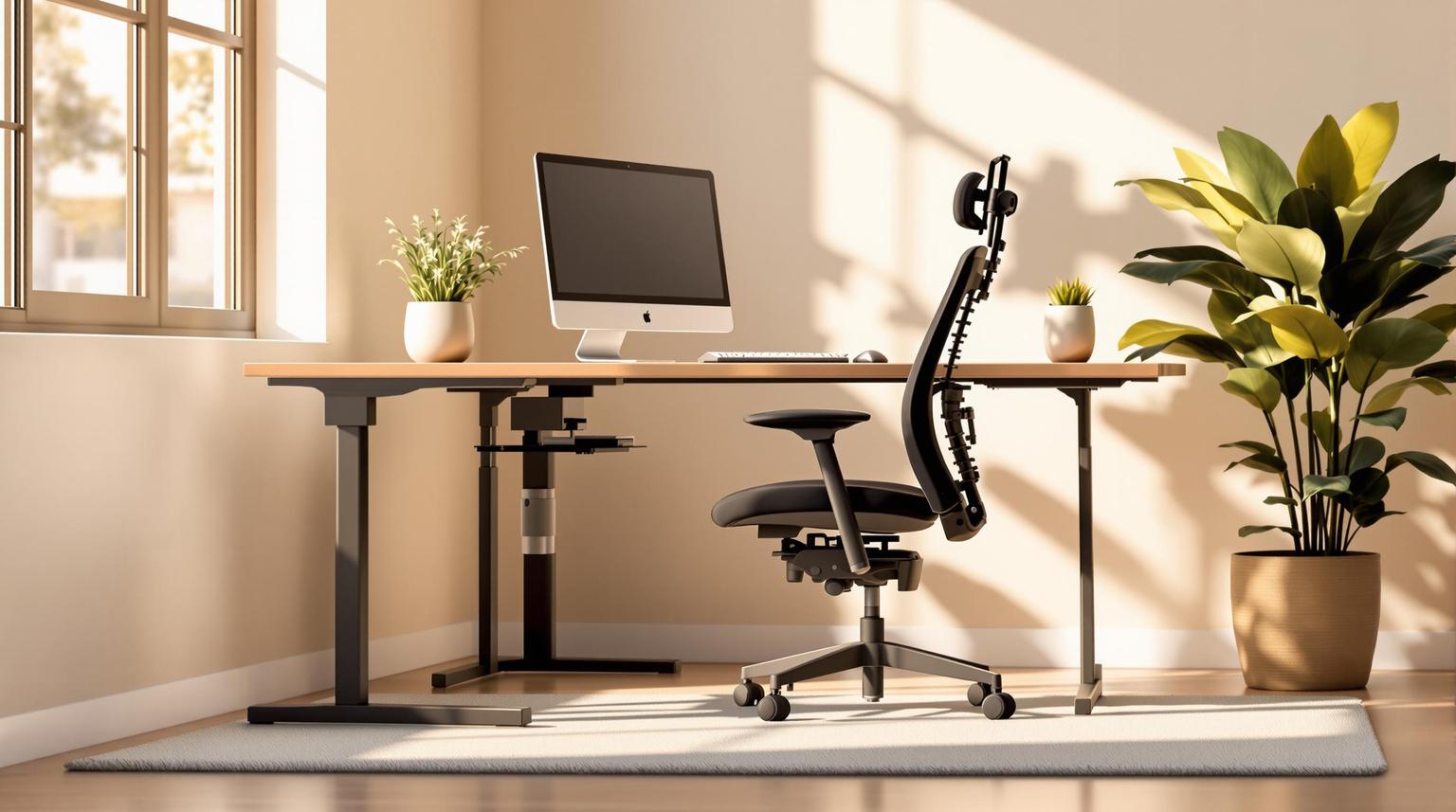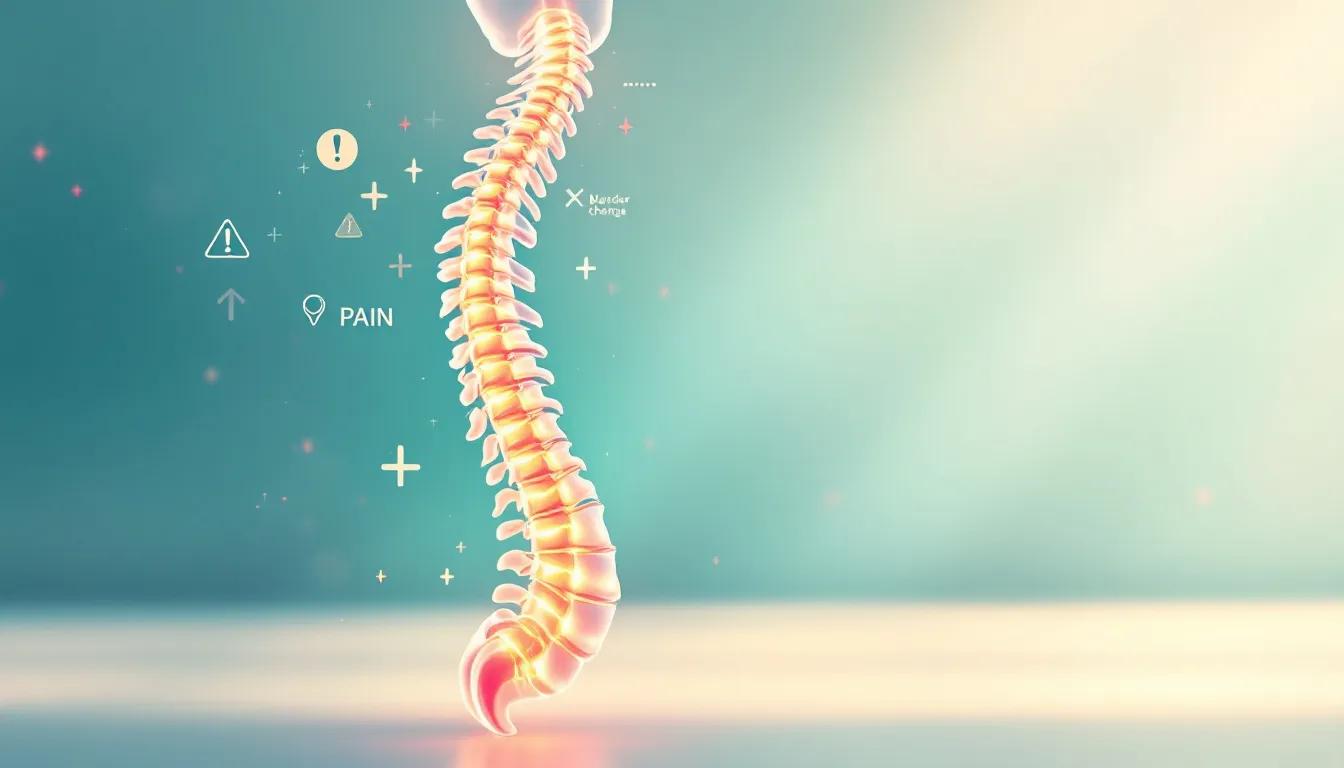Sciatica is a symptom, not a diagnosis, characterized by pain along the sciatic nerve path. Here's what you need to know:
- Causes: Herniated discs, spinal stenosis, piriformis syndrome, disc degeneration
- Symptoms: Pain from lower back to leg, tingling, numbness, weakness
- Treatments:
- At home: Ice/heat, gentle exercise, stretching, OTC pain relievers
- Medical: Physical therapy, prescription meds, epidural shots, rarely surgery
When to see a doctor:
- Sudden severe pain
- Weakness or numbness in both legs
- Loss of bladder/bowel control
- Fever with sciatica pain
Most cases improve within weeks without surgery. Early treatment and consistent care often lead to significant improvement in 4-6 weeks.
| Treatment | At Home | Medical |
|---|---|---|
| Initial | Ice (first 2-3 days) | Physical therapy |
| Follow-up | Heat (after 2-3 days) | Prescription meds |
| Ongoing | Stretching, OTC pain relievers | Epidural shots, Surgery (rare) |
Remember: Keep moving, maintain good posture, take breaks from sitting, and lift properly to prevent sciatica.
Related video from YouTube
Understanding Sciatica
Sciatica is more than just a pain in the rear - it's a condition that can affect your entire lower body. Let's dive in:
The Sciatic Nerve
The sciatic nerve is your body's leg sensation and movement superhighway:
- It's your largest nerve, about 2cm wide
- Runs from lower back through hips, buttocks, and down each leg
- Composed of five spinal nerves: L4, L5, S1, S2, and S3
This nerve does double duty:
| Function | Role |
|---|---|
| Motor | Controls thigh, leg, and foot muscles |
| Sensory | Provides feeling to lower legs and feet |
Sciatica Symptoms
When your sciatic nerve acts up, you'll notice. Common symptoms:
- Pain shooting from lower back to leg
- Tingling or numbness along the nerve's path
- Leg or foot weakness
"Sciatica feels like 'pins and needles' or a burning pain starting in your lower back and traveling down your leg", says Dr. Sarah Johnson from Mayo Clinic.
Pain can vary:
- Sharp stab
- Constant, deep ache
- Electric shock-like sensation
Here's the twist: sciatica usually hits one side of your body. Rarely, it affects both legs.
Sciatica can strike suddenly or creep up slowly, depending on the cause:
- Herniated disk? Sudden pain
- Spinal arthritis? Gradual buildup
Pregnant women aren't immune. Pregnancy hormones can loosen ligaments and connective tissue, potentially leading to pinched nerves.
Most sciatica cases aren't serious. Many people manage symptoms with self-care. But if pain is severe or persistent, see a doctor.
What Causes Sciatica?
Sciatica isn't a standalone condition. It's a symptom of other issues. Let's dive into the main culprits:
Herniated Discs
Herniated discs top the list, causing up to 90% of sciatica cases. Here's the deal:
- Disc's soft center pushes out
- Presses on nearby nerve roots
- Result? Pain, numbness, and tingling along the sciatic nerve
"A herniated disc is like a jelly donut. When the jelly squeezes out and touches a nerve, it causes inflammation and pain." - Dr. Jennifer Ashton, ABC News Chief Medical Correspondent
Spinal Stenosis
When your spinal canal narrows, it can squeeze the sciatic nerve. This leads to:
- Lower back and leg pain
- Numb or weak legs
- Trouble walking or standing long
| Cause | How It Happens |
|---|---|
| Bone overgrowth | Often from osteoarthritis |
| Thick ligaments | Natural aging |
| Herniated discs | Pressure on spinal canal |
Piriformis Syndrome
This one's less common. It involves your piriformis muscle:
- Muscle spasms irritate the sciatic nerve
- Pain gets worse when sitting
- Can cause pain in the opposite sacroiliac joint
Disc Degeneration
As we age, our spinal discs wear down:
- Discs dry out and lose flexibility
- Can lead to bulging or herniation
- Possible nerve compression and sciatica
"Disc degeneration is a normal part of aging. But for some, it can lead to painful conditions like sciatica." - Dr. Stuart McGill, back pain expert
Who's at Risk for Sciatica?
Sciatica can hit anyone, but some folks are more likely to get it. Let's break it down:
Age
Your spine changes as you age:
- 30-50 year olds are prime targets
- Older? Your risk goes up
- Seniors might face spinal stenosis or worn-out discs
Job Risks
Your 9-to-5 can be a pain in the... back:
| Job | Why It's a Pain |
|---|---|
| Construction | Lifting heavy stuff, bending all day |
| Warehouse | Lots of lifting and twisting |
| Healthcare | Moving patients around |
| Driving | Sitting forever, feeling every bump |
| Office work | Glued to your chair |
Fun fact: 80% of back and shoulder injuries in healthcare? Blame it on moving patients.
Lifestyle Choices
Your daily habits matter:
- Carrying extra pounds? Your spine feels it
- Couch potato? Your back muscles get weak
- Smoker? You're damaging your back
- Diabetic? Your nerves might suffer
"Smokers are more likely to get sciatica. Nicotine messes with blood flow." - Dr. Bonaventure Ngu, Premier Spine Institute
Want to dodge sciatica? Try this:
- Stand up and stretch if you sit all day
- Lift smart, not hard
- Watch your weight
- Kick the smoking habit
- If you're diabetic, keep that blood sugar in check
How Doctors Diagnose Sciatica
Doctors use a mix of methods to figure out if you have sciatica. Here's how they do it:
Physical Exam
Your doctor starts by asking about your pain and checking how you move. They're looking for:
- Pain location
- Pain intensity
- What makes it better or worse
Then, they do some hands-on tests:
1. Straight Leg Raise (SLR) Test
You lie down, and the doctor lifts your leg. If it hurts when your leg is between 30 and 70 degrees, it might be sciatica.
2. Slump Test
You sit and slouch forward. The doctor lifts your leg and bends your foot. Pain? Could be sciatica.
These tests help, but they're not perfect. The SLR test is good at finding sciatica (91% accurate) but not great at ruling it out (only 26% accurate).
Imaging Tests
If the physical exam isn't clear, you might need scans:
| Test | What It Shows | When It's Used |
|---|---|---|
| X-ray | Bones | Other issues |
| MRI | Soft tissues | Nerves and discs |
| CT scan | 3D spine view | If MRI isn't possible |
MRIs are the most helpful. They show your sciatic nerve and can spot problems like herniated discs.
Sometimes, doctors use special tests like EMG (checks nerve and muscle function) or nerve blocks (numbs the sciatic nerve to see if it stops the pain).
"We only use imaging if we suspect something serious or if standard treatments aren't working after 6-8 weeks", says Dr. Bonaventure Ngu of Premier Spine Institute.
sbb-itb-78deb13
Sciatica Treatment Options
Sciatica pain can be a real pain in the... well, you know. But don't worry, there are ways to tackle it. Let's dive into what you can do at home and when it's time to call in the pros.
DIY Pain Relief
You'd be surprised how much you can do without stepping foot in a doctor's office:
1. Ice, Ice, Baby... Then Heat
Start with ice for the first few days. Slap on an ice pack for 20 minutes at a time. After that, switch to heat to loosen things up.
2. Keep Moving (But Don't Overdo It)
Rest is good, but don't become a couch potato. Try:
- A 30-minute stroll a few times a week
- Swimming or water aerobics (great for taking the pressure off)
3. Stretch It Out
Simple stretches can work wonders. Give these a shot:
- Piriformis Stretch: Lie down, cross one ankle over the opposite knee, pull your thigh towards you.
- Hamstring Stretch: On your back, bend one knee, pull the other leg straight up.
4. Pop a Pill (The Over-the-Counter Kind)
NSAIDs like ibuprofen can help with pain and swelling.
5. Stand Tall
Good posture isn't just for looks. It takes pressure off your spine and that angry sciatic nerve.
When to Call in the Cavalry
If DIY isn't cutting it, it's doctor time. They might suggest:
| Treatment | What's the Deal? | When It's Used |
|---|---|---|
| Physical Therapy | Learn exercises to beef up your core and back | For ongoing pain management |
| Prescription Meds | Stronger stuff than what you get at the drugstore | When over-the-counter meds aren't enough |
| Steroid Shots | Calms down inflammation around the nerve | For severe, stubborn pain |
| Nerve Blocks | Stops pain signals in their tracks | For specific nerve pain cases |
Surgery? It's rare for sciatica. Only if nothing else works after weeks of trying or if things get really bad.
Preventing Sciatica
Sciatica's a pain. But you can fight back. Here's how to keep this nerve problem away.
Set Up Your Space Right
Your daily habits matter. Here's how to fix your workspace:
- Get a chair with good back support. Add a pillow if needed.
- Put your screen at eye level.
- Keep your keyboard and mouse close.
| Do This | Why |
|---|---|
| Feet on floor | Less back pressure |
| Knees, hips at 90° | Spine stays straight |
| Don't cross legs | Even hip pressure |
Move every 20 minutes. Stand up. Walk around. Use a sit-stand desk if you can.
Build a Strong Core
A strong core helps. Try these:
1. Walk: 30 minutes most days.
2. Swim: It's easy on your spine.
3. Stretch: Do these daily:
- Lie down. Pull one knee to your chest. Hold 10 seconds. Switch legs.
- Lie down. Bend knees. Stretch arms out. Lower back to floor.
4. Yoga: 2-3 times a week. It helps your body awareness and spine health.
"Good posture keeps your spine in good shape." - Thomas L. Jones II, MD
Start slow. Listen to your body. If it hurts, stop. Ask a doctor.
Living with Sciatica
Sciatica can be tough, but you can manage it. Here's how:
Your Treatment Plan
1. Move more
Exercise helps. Try walking, swimming, or yoga. Start small and build up.
2. Stretch daily
Do simple stretches like knee-to-chest or forward bends.
3. Manage pain
| Method | How | When |
|---|---|---|
| Ice | 20 minutes | First 48-72 hours |
| Heat | 15-20 minutes | After 72 hours |
| OTC meds | As directed | Severe pain |
4. Set up your space
Make your workspace back-friendly. Use a good chair, keep your screen at eye level, and take breaks.
5. Sleep right
Use a firm mattress and a pillow between your knees. Aim for 7-9 hours of sleep.
6. Manage stress
Try deep breathing, meditation, or hobbies you enjoy.
"When you're limited or disabled by chronic sciatica, it's easy to lose hope from the severity of pain." - Aidan Fisher, Pain Specialty Group
If pain persists or worsens, see a doctor. They might suggest physical therapy, injections, or procedures like lumbar decompression.
Living with sciatica is about finding what works for you. Keep trying. With the right plan, you can manage your pain and live well.
When to See a Doctor
Most people manage sciatica at home, but some symptoms need medical attention. Here's when to get help:
Red Flags
1. Sudden, severe pain
Sharp, intense pain in your back, leg, or side, especially at rest or night? See a doctor ASAP.
2. Weakness or numbness
| Symptom | What to Do |
|---|---|
| Both legs weak | Get immediate care |
| Numb groin/legs | Call your doctor |
| Can't lift foot | See a doctor |
3. Can't control bladder/bowels
This could be cauda equina syndrome. It's an emergency. Get help within 24-48 hours to avoid permanent nerve damage.
4. Fever or chills
Might be an infection. Call your doctor if you have a high fever with sciatica pain.
5. Pain after injury
Sciatica started after an accident? See a doctor to check for serious damage.
6. Symptoms won't go away
Pain lasting weeks or getting worse? Time to see a doctor.
"Dealing with stubborn sciatica pain can be tough, especially when it's bad and won't let up." - Complete Care Staff
Don't wait too long. A study showed sciatica patients who waited over six months had worse outcomes.
Not sure? Check with a doctor. They can rule out serious issues and help you find the right treatment.
Wrap-Up
Sciatica's a real pain. But knowing what you're dealing with helps. Here's the rundown:
Causes:
- Herniated discs
- Spinal stenosis
- Piriformis syndrome
- Disc degeneration
Treatment:
| At Home | Medical |
|---|---|
| Ice (first 2-3 days) | Physical therapy |
| Heat (after 2-3 days) | Prescription meds |
| Stretching | Epidural shots |
| OTC pain relievers | Surgery (rare) |
Good news: Most people feel better in weeks. 90-95% don't need surgery.
See a doctor if:
- Pain hits hard and fast
- Both legs go weak or numb
- Can't control bladder or bowels
- Fever with sciatica pain
Act fast. It matters. Dr. John Doe from XYZ Hospital says:
"Patients who get help early and stick to their treatment plan often see big improvements in 4-6 weeks."
Keep your back happy:
- Exercise (focus on your core)
- Stand up straight
- Take breaks from sitting
- Lift smart
FAQs
What is the main cause of sciatica?
Sciatica happens when something pinches the sciatic nerve. The usual suspect? A herniated disk in your lower back. Sometimes, bone overgrowth (spinal stenosis) is the culprit.
What's the fastest way to ease sciatica?
Quick relief playbook:
- Ice the sore spot (first 2-3 days)
- Switch to heat after day 3
- Pop some over-the-counter pain meds
- Do gentle stretches
How to release sciatic nerve pain?
Try these home remedies:
| Method | How-to |
|---|---|
| Ice | 20 minutes, several times daily (first 2-3 days) |
| Heat | After day 3, 15-20 minutes |
| OTC meds | Follow package directions |
| Stretching | Target lower back and hamstrings |
Can I cure my own sciatica?
Mild sciatica? You might be able to handle it at home. Ice, heat, OTC pain meds, and gentle exercises can help. But if pain worsens or sticks around for over a week, it's doctor time. They might suggest physical therapy or other options.
"You can usually treat mild sciatica yourself with heat, ice, OTC pain meds, and stretching and strengthening exercises." - Richard Coughlan, Healthcare Writer
Heads up: If you lose feeling, can't move, or have bladder issues, get medical help ASAP.



